Toronto attic needs blown-in insulation—and if you’ve noticed inconsistent indoor temperatures, rising energy bills, or drafts near your ceiling, it’s likely time to take action. In Toronto’s variable climate—where winter lows plunge below -20°C and summer highs soar past 30°C—an under-insulated attic can compromise your home’s comfort, efficiency, and even structural integrity. Proper attic insulation isn’t just about warmth; it’s a critical defense against ice dams, moisture buildup, and heat loss that can cost homeowners hundreds (or even thousands) in wasted energy each year.
Among the trusted experts addressing this need across the Greater Toronto Area (GTA), Milan Insulation stands out as a top-tier provider of professional blown-in insulation services. With years of experience, certified technicians, and a commitment to using high-quality, eco-friendly materials like cellulose and fiberglass, Milan Insulation delivers tailored solutions for every Toronto home—from century-old houses in Cabbagetown to modern builds in Vaughan. If your Toronto attic needs blown-in insulation, partnering with a local specialist like Milan ensures optimal R-value, seamless installation, and long-term savings you can count on.
Table of Contents
ToggleWhy Blown-In Insulation Is Ideal for Toronto Attics
Before diving into the warning signs, it’s important to understand why blown-in insulation is the go-to choice for attic retrofits in Toronto. Unlike batt or roll insulation—which can leave gaps around joists, vents, and irregular framing—blown-in insulation is pneumatically sprayed as loose-fill material, conforming perfectly to every nook and cranny. This creates a seamless thermal barrier that minimizes air leakage, a major cause of energy waste in older homes.
In the GTA, where many houses were built before modern energy codes, attics often have outdated or insufficient insulation—sometimes as low as R12 or R20. Current Ontario building standards recommend R50 to R60 for attics in Climate Zone 6 (which includes Toronto). Blown-in cellulose or fiberglass can easily achieve this depth without major structural changes, making it both cost-effective and highly efficient. Plus, cellulose—a recycled, fire-retardant material—is an eco-conscious option that aligns with Toronto’s sustainability goals.
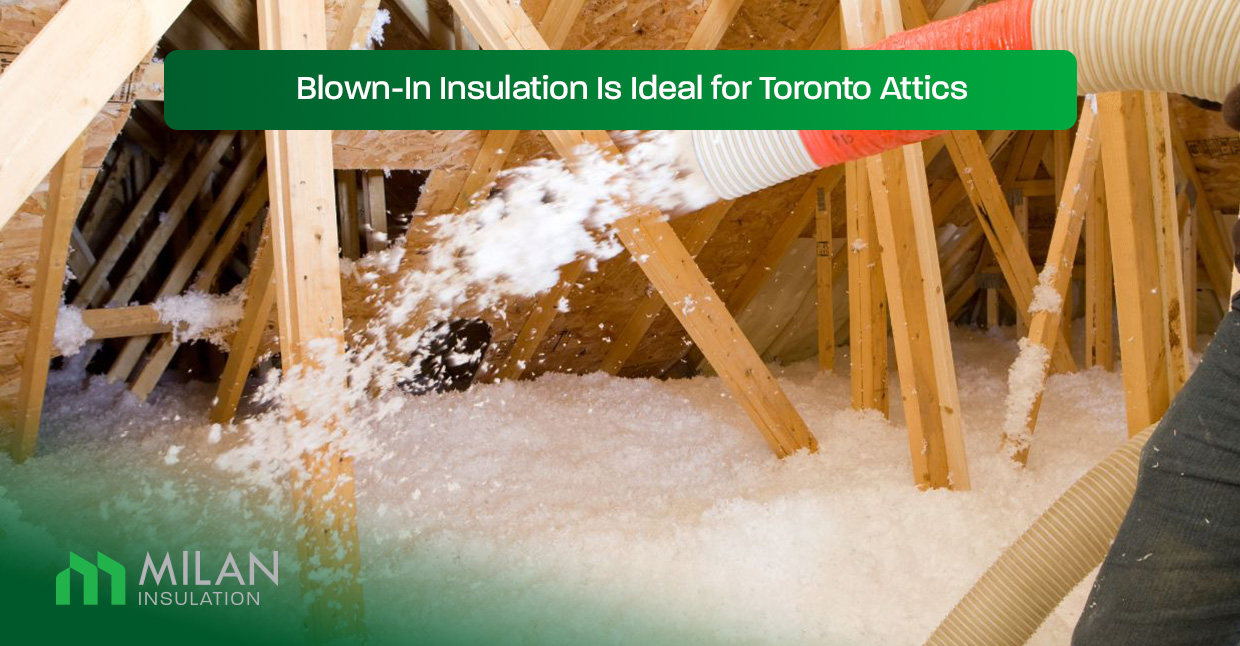
Sign #1: Skyrocketing Energy Bills During Winter or Summer
One of the clearest indicators that your Toronto attic needs blown-in insulation is a sudden or steady increase in heating and cooling costs. If your furnace runs constantly in January or your AC struggles to cool upper floors in July, heat is likely escaping (or entering) through an under-insulated attic.
Heat rises—so without adequate insulation, up to 30% of your home’s heat can be lost through the roof in winter. In summer, an uninsulated attic becomes a heat trap, radiating warmth downward and forcing your air conditioner to overwork. Homeowners in Scarborough, Etobicoke, and North York frequently report 15–30% energy savings after upgrading to proper blown-in attic insulation. If your utility bills are climbing despite unchanged usage, it’s a strong signal that your attic is the weak link.
Sign #2: Uneven Room Temperatures or Cold Spots
Do your upstairs bedrooms feel like walk-in freezers in winter while the basement stays cozy? Or does your top floor become unbearably hot by mid-afternoon in August? These temperature inconsistencies are classic symptoms of poor attic insulation.
When your Toronto attic needs blown-in insulation, heat transfer isn’t regulated properly. Cold air infiltrates living spaces through ceiling gaps, and warm air escapes in winter. This imbalance forces your HVAC system to compensate unevenly, creating hot and cold zones. Blown-in insulation fills voids between joists and around recessed lighting, chimneys, and ductwork—areas where traditional batts often fall short. After a professional installation by a trusted company like Milan Insulation, most Toronto homeowners notice immediate improvements in whole-home comfort.
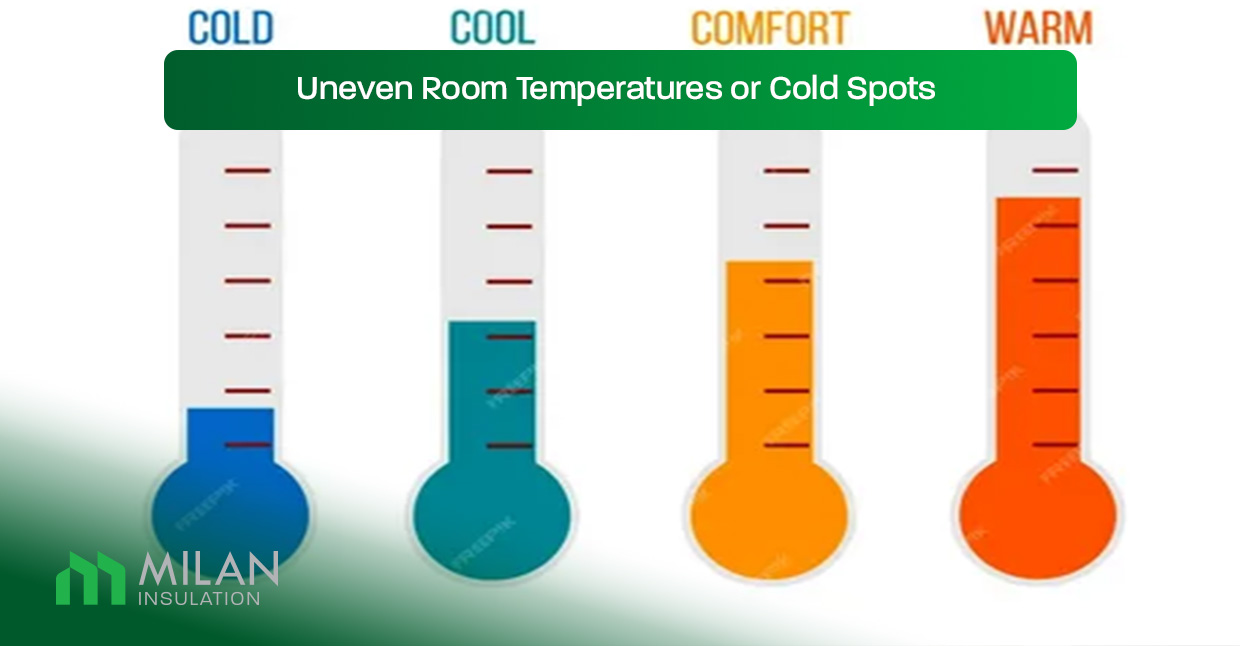
Sign #3: Ice Dams or Icicles Forming on Your Roof in Winter
If you see thick icicles hanging from your eaves or large ridges of ice along your roofline after a snowfall, you’re likely dealing with ice dams—a serious red flag that your Toronto attic needs blown-in insulation (and possibly better ventilation).
Ice dams form when heat from an inadequately insulated attic melts snow on the roof. The meltwater flows down to the colder eaves, refreezes, and builds up into dams that trap more water. This water can seep under shingles, causing leaks, mold, and structural damage. Proper blown-in insulation keeps the attic cold—close to outdoor temperatures—preventing snow melt at the source. In Toronto’s snowy winters, this is not just a comfort issue but a critical home protection measure.
Sign #4: Visible Gaps, Settling, or Old/Compressed Insulation
Take a look in your attic. If you can see the top of your floor joists, your insulation is likely too thin. In a properly insulated attic, insulation should sit well above the joists—typically 14 to 20 inches deep for R50–R60.
Additionally, older fiberglass batts often compress, sag, or shift over time, creating gaps that compromise performance. Rodent activity, moisture exposure, or DIY installations can further degrade effectiveness. Blown-in insulation—especially cellulose—resists settling and maintains consistent density. If your attic insulation looks patchy, dusty, or visibly thin, it’s time to consider a professional blown-in upgrade. Milan Insulation offers free attic assessments across the GTA to evaluate current R-value and recommend precise solutions.
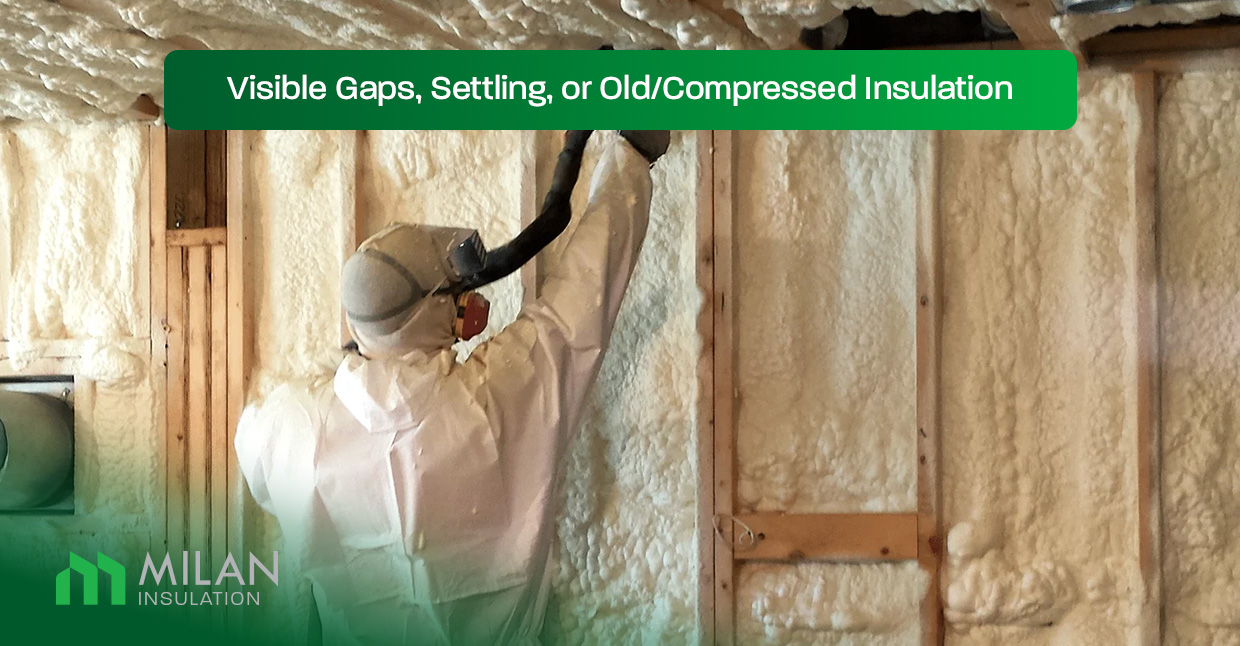
Sign #5: Excessive Outside Noise or Drafts Near the Ceiling
While often overlooked, sound transmission is another clue. If you hear rain, wind, or neighborhood noise more loudly on upper floors, your attic may lack sufficient insulation mass. Blown-in cellulose, in particular, has excellent sound-dampening properties due to its dense, fibrous composition.
Similarly, if you feel drafts near ceiling fixtures, light cans, or attic hatches, it’s a sign of air leakage—something blown-in insulation seals effectively. Unlike rigid boards or batts, loose-fill insulation flows into cracks and around penetrations, creating an airtight envelope. For Toronto homeowners near busy streets (like along Eglinton or Finch), this added acoustic benefit is a welcome bonus.
How Much Does Blown-In Insulation Cost in Toronto?
Now that you recognize the signs—how much will it cost to fix it? The price of blown-in insulation in Toronto depends on attic size, desired R-value, material type, and accessibility.
Material Options & Costs
- Blown-in Fiberglass: $1.20 – $1.80 per sq. ft.
Lightweight, non-combustible, and resistant to moisture. Ideal for dry attics. - Blown-in Cellulose: $1.40 – $2.10 per sq. ft.
Made from 80%+ recycled paper, treated for fire resistance. Offers better soundproofing and slightly higher R-value per inch (~R3.6–R3.8).
| Attic Size (sq. ft.) | Fiberglass Cost | Cellulose Cost |
|---|---|---|
| 500 | $600 – $900 | $700 – $1,050 |
| 800 | $960 – $1,440 | $1,120 – $1,680 |
| 1,000 | $1,200 – $1,800 | $1,400 – $2,100 |
| 1,200+ | $1,440 – $2,160+ | $1,680 – $2,520+ |
Note: These prices include professional installation by certified contractors like Milan Insulation and assume standard attic access. Complex layouts, removal of old insulation, or air-sealing upgrades may increase costs.
Why Choose Professional Installation in the GTA?
While DIY insulation kits exist, blown-in insulation requires specialized equipment—a powerful blower, hoses, and calibrated nozzles—to achieve uniform density and depth. Uneven application leads to cold spots and reduced performance.
Professional installers like Milan Insulation also:
- Perform attic inspections to assess ventilation, moisture, and existing insulation
- Seal air leaks around chimneys, ducts, and recessed lights before insulating
- Ensure compliance with Ontario Building Code and Toronto bylaws
- Help you apply for federal or municipal rebates (e.g., Canada Greener Homes Loan)
With same-week service across Toronto, Mississauga, Brampton, and Markham, Milan Insulation makes upgrading your attic fast, clean, and stress-free.
Final Thoughts: Don’t Ignore the Signs
If your Toronto attic needs blown-in insulation, delaying the upgrade only increases energy waste, comfort issues, and potential damage. The five signs above—high bills, temperature swings, ice dams, thin insulation, and noise—are clear calls to action for GTA homeowners.
Investing in quality blown-in insulation isn’t just a home improvement—it’s a long-term strategy for resilience, efficiency, and sustainability in Canada’s demanding climate. And with trusted local experts like Milan Insulation offering transparent pricing and expert service, there’s never been a better time to act.
References
https://www.energy.gov/energysaver/insulation
https://www.canada.ca/en/environment-climate-change/services/environmental-indicators.html
https://www.ontario.ca/laws/regulation/120332
https://natural-resources.canada.ca/energy-efficiency/energy-star-canada
https://nrc.canada.ca/en/research-development/research-collaboration/
FAQs
How do I know if my Toronto attic needs blown-in insulation?
Look for signs like high energy bills, cold upstairs rooms in winter, ice dams, visible joists in the attic, or excessive outside noise—these all suggest your Toronto attic needs blown-in insulation.
Is blown-in insulation better than batt insulation for attics?
Yes—blown-in insulation fills gaps, conforms to irregular spaces, and provides a more consistent thermal barrier, making it ideal for retrofitting older Toronto homes with complex attic framing.

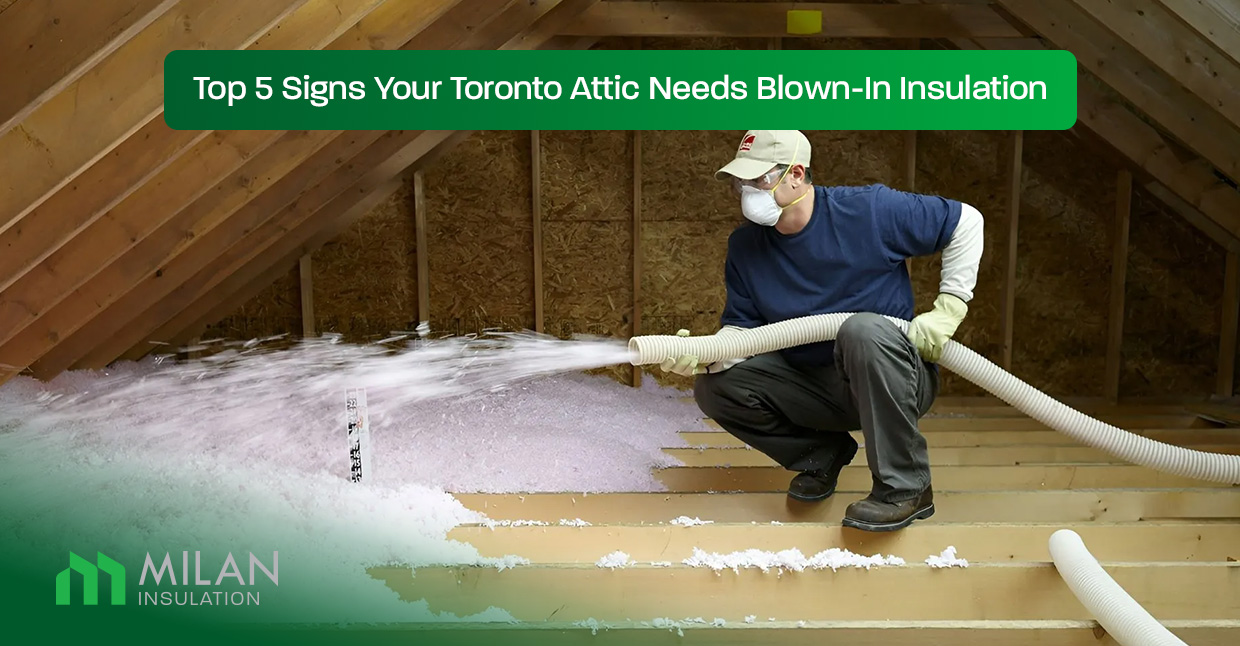
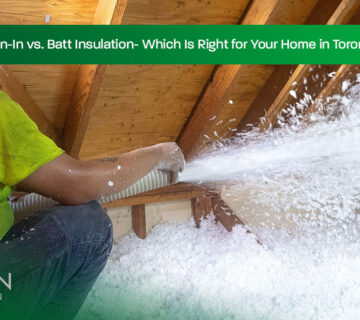
No comment